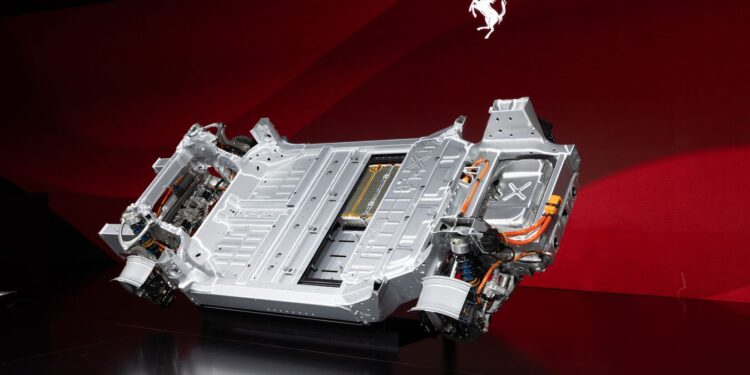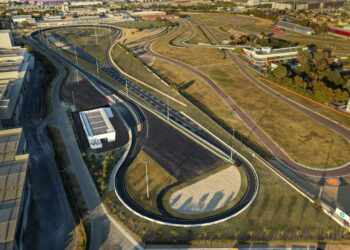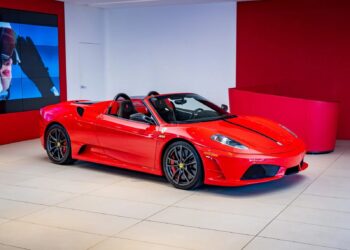Back in May this year, we touched upon how Ferrari was on track to showcase its Core EV technology in October. Well, that time has now come because Ferrari has just taken its biggest engineering leap since Enzo Ferrari himself founded the marque. At Capital Markets Day 2025, the company unveiled the chassis, powertrain, and core systems of its first-ever electric vehicle, the Ferrari Elettrica, the first part of a three-phase reveal. From the details, what’s immediately apparent is that this is a ground-up rethink of how to make an all-electric powertrain resonate with the emotional values of a Ferrari.
Ferrari didn’t rush this. After more than a decade of hybrid development, starting with the Hybrid era in Formula 1 in 2009, the 599 HY-KERS prototype, then LaFerrari, SF90 Stradale, the 296 GTB, and more recently with the 849Testarossa. The Elettrica represents the culmination of that journey. It’s powered by over 60 patented technologies, built almost entirely in-house at Maranello as previously confirmed by CEO Benedetto Vigna. It is engineered to deliver the same immediacy and precision that have defined every V8 or V12 Ferrari since.
Coming to the specifications, the Elettrica exceeds 1,000 cv (which is about 986 horsepower) in boost mode, can hit 62 mph in 2.5 seconds, and tops out at 193 mph. It carries an energy-dense 122 kWh structural battery pack, with 800 V architecture, and can fast charge up to 350 kW. Range? Over 329 miles on the WLTP cycle. Despite weighing roughly 5,070 pounds, it crucially maintains Ferrari’s trademark 47/53 weight balance. The center of gravity sits a full 3.15 inches lower than any comparable internal combustion model.
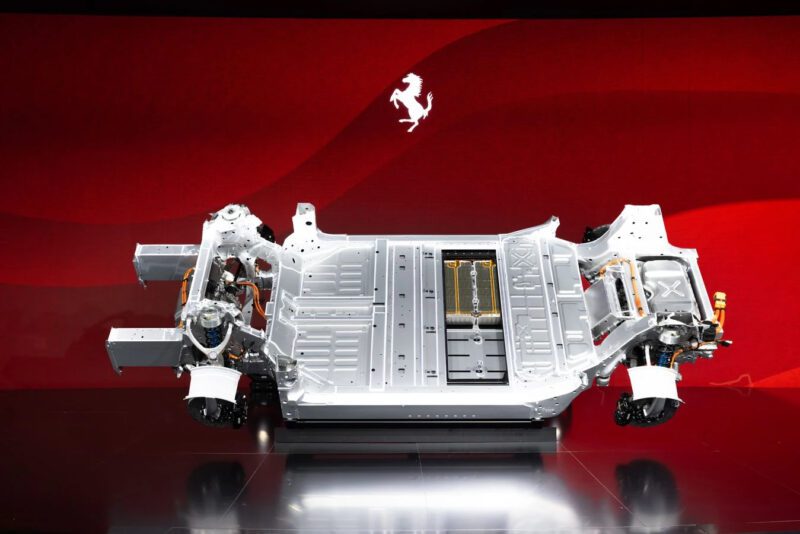
That low-slung balance comes from the battery’s full integration into the chassis. Ferrari has actually designed it as a structural element, not a separate slab as in most high-performance EVs, using die-cast compression plates that also serve as mounting points. 15 modules house 210 high-density cells (305 Wh/kg, 159 Ah), arranged for minimal inertia and maximum safety. A single fuse can isolate 2,000 A in three milliseconds if something goes wrong. You can even remove and service the battery on a carrier-proof Ferrari. Another significant development is Ferrari’s first-ever rear sub-frame.
Each e-axle pack is impressively powerful, with the front producing 210 kW (282 horsepower) and 3,500 Nm (2,581 pound-feet) of torque, and can decouple at any speed, and shifts to pure rear-wheel drive on command. The rear axle puts out 620 kW (832 horsepower) with up to a staggering 8,000 Nm (5,900 pound-feet) to the wheels in Performance Launch mode. The motors upfront can spin up to 30,000 r.pm, and the ones in the rear, 25,500 rpm. The torque vectoring on each axle allows you to further adjust the longitudinal load. All components, transmissions, inverters, and casings are cast in-house from 75 percent recycled aluminum.
Dry-sump lubrication, integrated cooling, and a park-lock mechanism keep everything compact and light. The front inverter, weighing just 20 pounds, delivers 300 kW and uses silicon-carbide modules that switch between 10 and 42 kHz for precise torque response and minimal electrical noise. The Vehicle Control Unit refreshes dynamic parameters 200 times a second, managing suspension, steering, and torque distribution in real time.
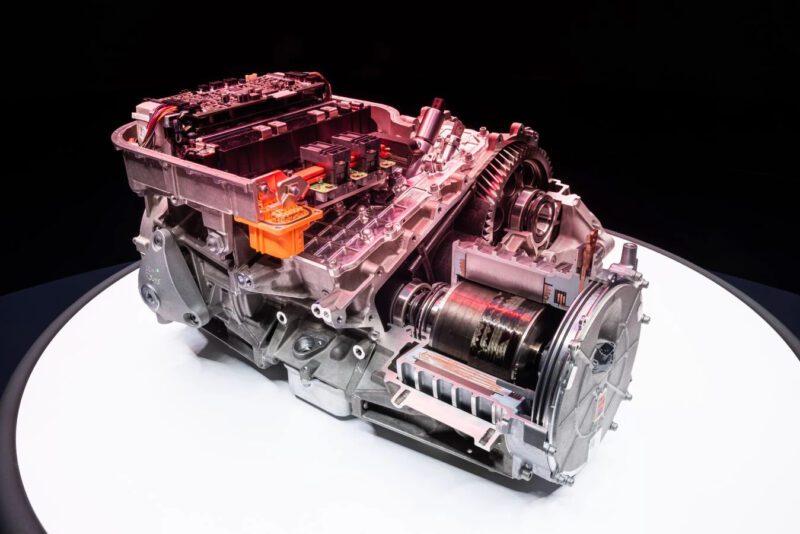
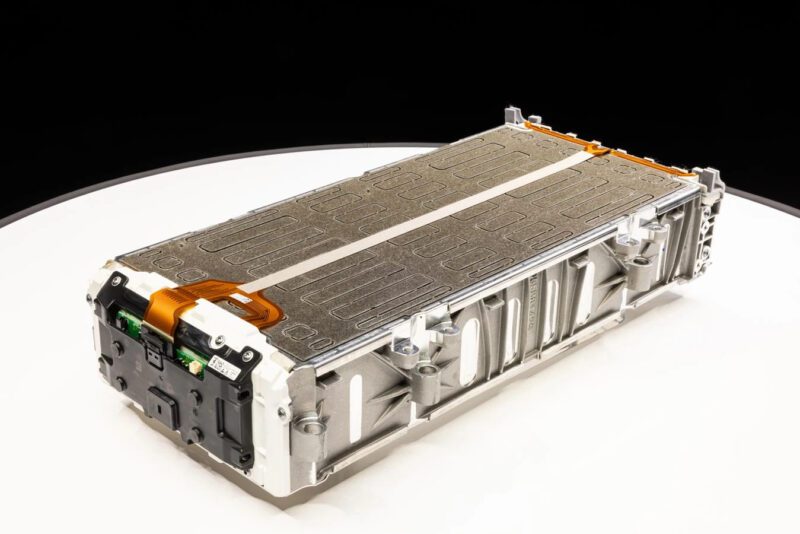
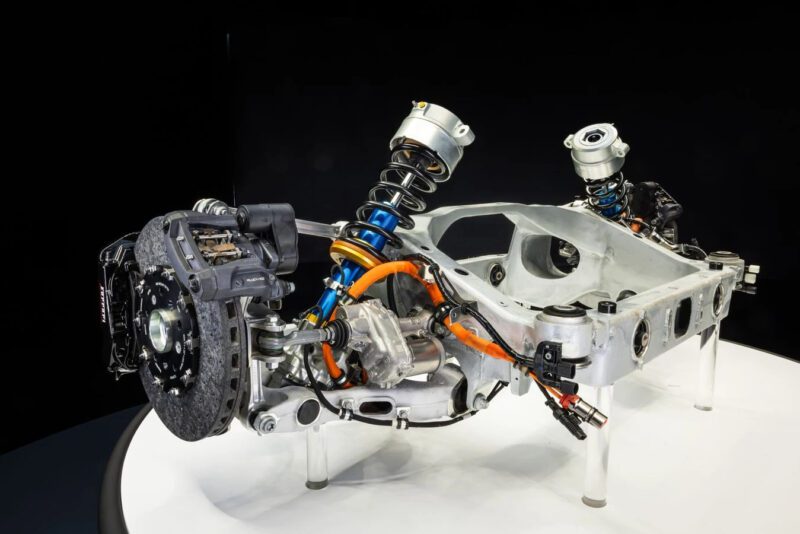
Ferrari’s third-generation 48 V active suspension, first seen on the Purosangue and subsequently the F80 hypercar, makes another leap here. Each shock now has a longer-pitch recirculating ball screw, shedding 4.4 pounds per unit while adding integrated thermocouples for oil temperature monitoring. Every wheel can also control vertical, lateral, and longitudinal forces independently, effectively giving the car four active corners with four-wheel steering, working in concert with the quad electric motors with roots in F1.
Sound is by far one of the most invigorating elements of any Ferrari, and the Italian automaker has thankfully avoided artificial speaker trickery. Instead, a rigid accelerometer on the inverter picks up the actual mechanical frequencies of the powertrain, producing a sound that scales naturally with throttle input. Quiet when cruising, expressive when pushed.
Complementing that sound is the control interface, which remains classic Ferrari. Here, the paddles don’t control a traditional gearbox. On the left paddle, you can dial in regenerative braking levels, creating the same tactile feel as engine braking. The right-side Manettino governs dynamics (with new Dry mode), while the left-side eManettino controls three powertrain modes: Range, Tour, and Performance. Each setting adjusts power delivery, axle engagement, and available torque for the conditions you’re in. Torque Shift Engagement gives you five selectable torque levels, accessed through the right paddle.
Even the tires are bespoke. Ferrari worked with three suppliers to reduce rolling resistance by 15 percent without losing grip. Five versions exist: three summer compounds, one winter, and one run-flat. The lower inertia of the EV layout reduced load transfer between axles, opening up new options for tire construction and tuning.
Being designed by ex-Apple designer Jony Ive, and set to be built at Ferrari’s new $200 million purpose-built facility north of Maranello, the Elettrica’s interior will debut in early 2026, followed by the full reveal in spring next year. This first look at Ferrari’s next chapter is a significant one. While a second EV won’t happen until 2028, Ferrari’s message is clear. It isn’t chasing anyone in this EV race. It is instead building its own path, one where physics, materials, and crucially, emotion align with its core values, only now the energy will come from electrons.
Images: Ferrari


